Judith Kerr: The Artist Who Came From Nazi Germany To Write A Wonderful Book About A Tiger Who Liked Tea
ALAN Yentob’s Imagine focuses on Judith Kerr, the author of such children’s books as Mog, My Henry, When Hitler Stole Pink Rabbit and most famously of all The Tiger Who Came to Tea. Kerr’s 90 and living in London. But she wasn’t born in England. Judith Kerr was born in Berlin. She fled Nazi Germany aged nine. Her father, Alfred Kerr, the dramatist and writer, had spoken out against the Nazis. The family should leave. A policeman told her father his passport was about to be seized. After they left, the Nazis burnt his books.
Children’s author Judith Kerr signs books for fans during the Tingle Creek Christmas Festival at Sandown Park.Date: 03/12/2011.
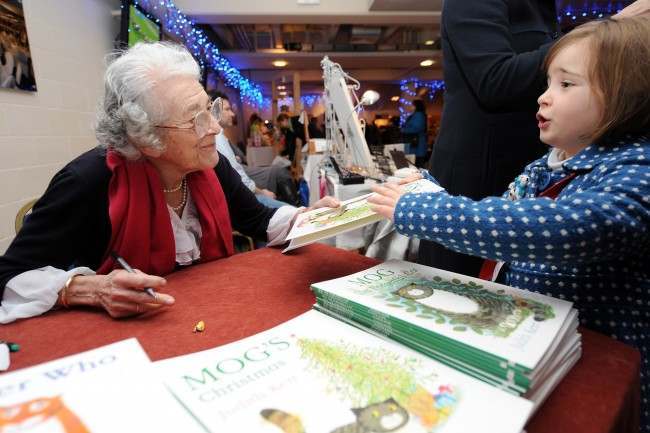
There a plaque at the station where she and her brother set off for swimming: “From this station the Berlin Jews were transported to Auschwitz.”
They settled in Paris. And then in 1936, her parents decided to move to England.
In Britain, she worked for the Red Cross, helping wounded soldiers. A talented Artist, Kerr was encouraged by her lover and soon-to-be-husband scriptwriter Nigel Kneale (creator of Quatermass) to find work at BBC television scriptwriter.
Judith Kerr proudly holds her Order of the British Empire (OBE) medal, after it was presented to her by the Prince of Wales during the Investiture ceremony at Buckingham Palace in central London. Picture date: Friday January 25, 2013.
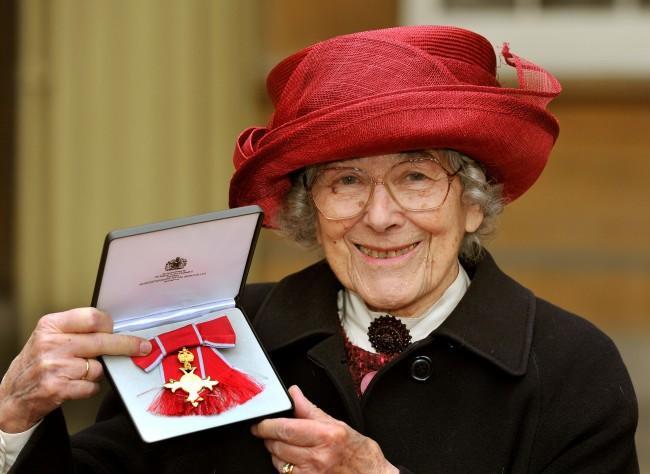
* By the start of the second world war, she was living in a grim residential hotel in Bloomsbury with parents who carried suicide pills in case of a German invasion. Her father made propaganda broadcasts for the BBC, while her mother became the main wage-earner as secretary to a wealthy socialite.
That period ended when the hotel was bombed with the Kerr family inside it: only a wardrobe prevented the ceiling in her father’s room from falling on his head. Her brother Michael, by then a law scholar at Cambridge, was interned on the Isle of Wight. “This is a good country, you know,” she says, not for the first time. “Germans were classed as enemy aliens, but people like us were officially called friendly enemy aliens. We had to report to the police if we went more than five miles away so we knew them well. My mother went straight to them when we heard Michael was interned and they tried to get a call through to him.”
As soon as Michael was released, he joined the RAF. Judith, meanwhile, began to attend life-drawing classes. She sold her first drawing for 3s 6d to a man she met at a Lyons Teashop, and then talked her way into painting murals for a restaurant in Victoria.
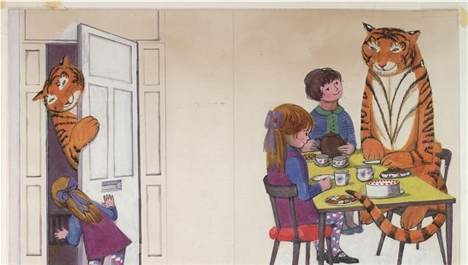
She left behind her pink rabbit in Germany. She was allowed to travel with just one toy. She never forgot.
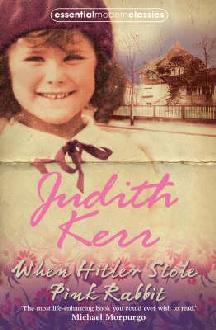
In When Hitler Stole Pink Rabbit, she writes:
“ I always knew we should have brought the games compendium” said Max, “Hitler’s probably playing Snakes & Ladders with it this very minute.” “And playing with Pink Rabbit!” Said Anna and laughed. But some tears had come into her eyes and were running down her cheeks all the same.” “Oh well, we’re lucky to be here at all,” said Max. “What do you mean?” Asked Anna. Max looked carefully passed her out of the window. “Papa heard from Heimpi,” he said with elaborate casualness. “The Nazis came for all out passports the morning after the elections.”
She writes in Judith Kerr’s Creatures’, by Judith Kerr:
* I can’t remember a time when I didn’t want to draw. It seemed a normal way to pass one’s time, just as it was normal for my brother Michael to kick a ball about. I liked to draw figures in motion, and I always drew them from the feet up, which I would now find difficult. My visual memory has always been very eccentric. My memory holds onto people walking on the street, how their trousers hang, how they move their arms. That stays.
No one else in my Jewish family drew, but my mother was very proud of my drawing and carefully preserved my better efforts…
I wanted to be a painter, but I didn’t do enough to get really good. After I left art school I was offered a job as a script reader for the BBC. I said yes, and loved it, though I sometimes felt a bit guilty, as though I’d betrayed something. It seems extraordinary to me now that for about 12 years of my life, I did not do any serious drawing. On the other hand, I feel I’m catching up now…
When I had my first child, Tacy, my husband Tom and I both made up stories for her. Quite often we went to the zoo. In those days, before David Attenborough, it was the only way you could see animals. After these visits I used to make up stories about the animals, and one she liked was about a tiger. She would say imperiously, “Talk the tiger.” That story became my first picture book, The Tiger Who Came to Tea, published in October 1968.
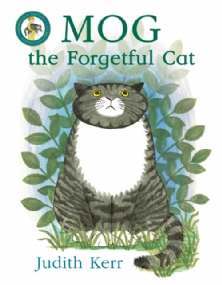
“Mog was a composite of many cats. Every cat is extraordinary – they all do different, very strange things. Our cat Wienitz was the strangest one: a very solid cat who was terribly fearful. She was frightened of heights and she was terrified of Christmas trees. I never meant to do a whole lot of books about Mog but I thought I could do a book about that…
“After The Tiger I thought I would be very methodical, and so before I wrote Mog I bought all these inks, and decided that I would try them out on a bit of paper. It was probably a delaying tactic so as not to have to start work! I drew the family as well, to refer back to.”
Posted: 26th, November 2013 | In: Books 0 Comments | TrackBack | Permalink


